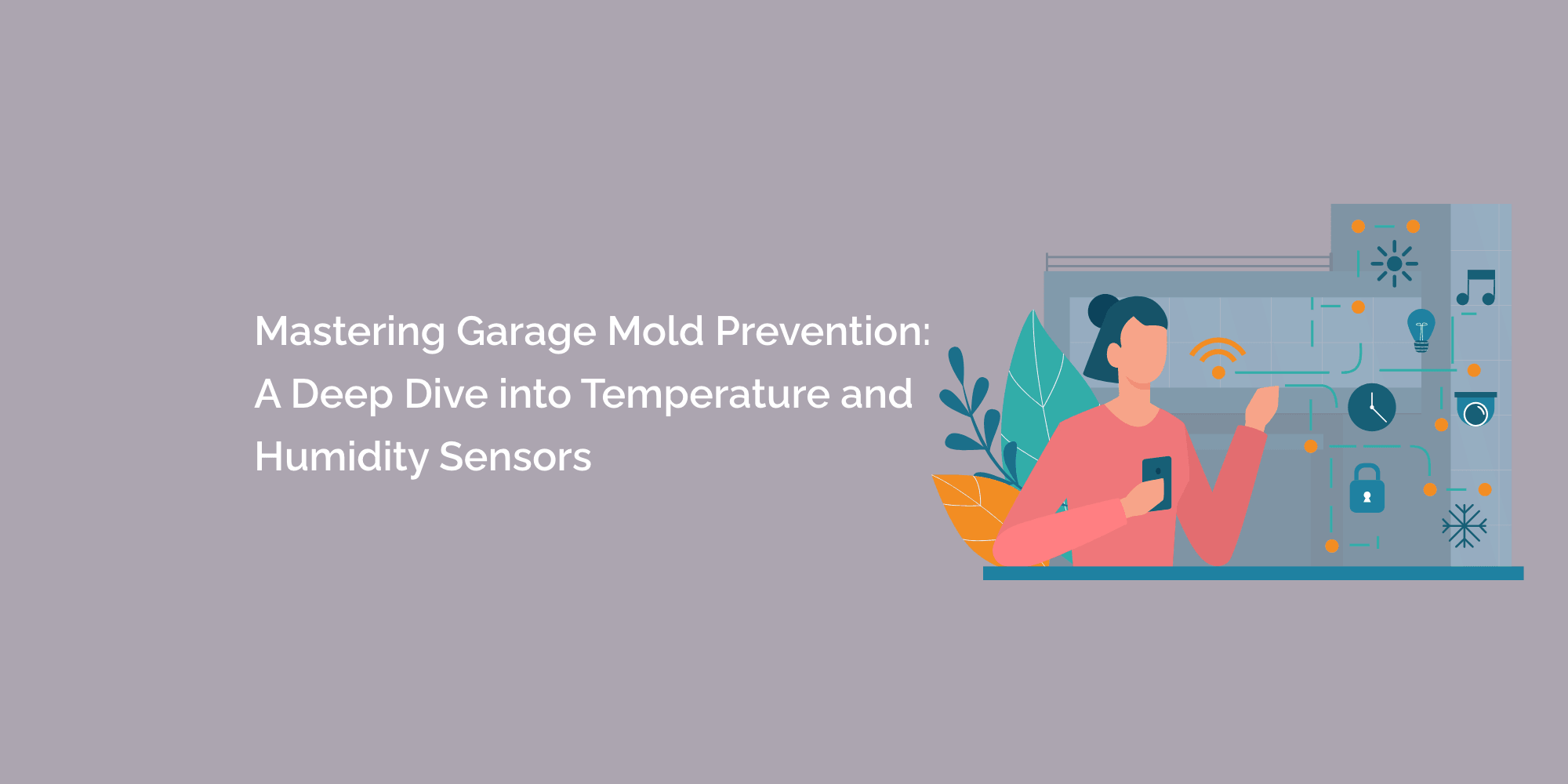Your garage, a space often underestimated, serves as more than just a storage area for vehicles and tools. It's a hub of activity, a haven for DIY projects, and an extension of your living space. However, this versatile environment can also be susceptible to mold growth due to its unique conditions.
To master garage mold prevention, you need a comprehensive approach, and at the heart of this strategy lie temperature and humidity sensors.
In this in-depth guide, we will take a thorough dive into the world of temperature and humidity sensors, understanding how they become your partners in creating a mold-free and healthy garage environment.
The Menace of Mold: Understanding the Threat
Mold, a persistent adversary, thrives in damp, humid environments. Your garage's relative lack of insulation, fluctuating temperatures, and potential for water intrusion make it a prime breeding ground for mold growth.
Mold not only damages your belongings but also poses health risks to you and your family. From allergies to respiratory issues, the consequences can be serious. Preventing mold growth in your garage is not just about maintaining appearances; it's about creating a safe and conducive environment for your activities.
Temperature Sensors: Your First Line of Defense
Temperature plays a vital role in mold prevention. Mold thrives in temperatures between 77°F and 86°F (25°C to 30°C). Temperature sensors act as your vigilant sentinels, constantly monitoring the ambient temperature and alerting you when it approaches the mold-friendly range. Here's how temperature sensors become your first line of defense:
1. Early Detection of Temperature Changes: Temperature sensors provide early detection of temperature fluctuations that could create an environment conducive to mold growth. A sudden drop in temperature could indicate inadequate insulation or the presence of moisture, both of which are potential precursors to mold infestations.
2. Timely Intervention: Upon receiving an alert from your temperature sensor, you can take immediate action to mitigate potential mold risks. Adjusting your garage's heating or cooling system, increasing ventilation, or addressing insulation issues are just a few examples of the steps you can take to prevent mold growth.
3. Optimal Climate Control: By closely monitoring temperature, you can maintain an optimal climate in your garage that inhibits mold growth. Preventing temperature fluctuations and staying outside the mold-friendly range disrupts the conditions necessary for mold to thrive.
Humidity Sensors: Unveiling the Moisture Threat
Humidity is another crucial factor in the battle against mold. Humidity sensors act as moisture detectives, continuously monitoring the moisture content in the air. Here's how humidity sensors become your trusted allies in mold prevention:
1. Timely Alert for Humidity Spikes: Humidity sensors send alerts when moisture levels exceed safe limits, indicating an increased risk of mold growth. This early warning empowers you to address the situation before mold can take hold.
2. Strategic Response: Upon receiving an alert, you can strategically respond by implementing measures to reduce humidity. Whether it's using a dehumidifier, improving ventilation, or addressing leaks, the information from humidity sensors guides your actions.
3. Long-Term Prevention: By consistently monitoring humidity levels, you create an environment that is unwelcoming to mold. Keeping humidity levels below the mold-friendly threshold discourages mold growth and helps maintain the integrity of your garage.
Integration and Automation: Powering Efficiency
The integration of temperature and humidity sensors with smart home systems takes your mold prevention strategy to the next level. This integration enables automation and efficient responses to changing conditions:
1. Customizable Alerts: Connect your sensors to your smart home system to receive alerts on your smartphone or other devices. Customize alerts based on your preferences and the severity of the situation.
2. Automated Responses: Program your system to respond automatically to alerts. For instance, if humidity levels rise, your system can activate a dehumidifier or improve ventilation to maintain optimal conditions.
3. Remote Monitoring: Even when you're away, smart home integration allows you to remotely monitor your garage's temperature and humidity. This real-time access ensures that you're always in control, no matter where you are.
Strategies for Effective Sensor Use
To harness the full potential of temperature and humidity sensors, consider the following strategies:
1. Strategic Placement: Install sensors strategically in areas prone to mold growth, such as basements, attics, and crawlspaces. Multiple sensors may be needed for larger spaces.
2. Regular Calibration: Calibrate your sensors periodically according to the manufacturer's guidelines. Regular calibration ensures accurate readings and reliable data.
3. Maintenance and Cleaning: Clean your sensors periodically to prevent dust or dirt buildup that could affect their performance. Regular maintenance prolongs the sensors' lifespan.
4. Interpreting Data: Educate yourself on interpreting the data provided by the sensors. Understand the optimal temperature and humidity ranges for different areas of your garage.
5. Comprehensive Mold Prevention: Temperature and humidity sensors are valuable tools, but they should be part of a comprehensive mold prevention strategy. Maintain proper ventilation, address leaks promptly, and ensure effective insulation.
The Future of Mold Prevention: AI and Beyond
The future holds exciting possibilities for mold prevention. Artificial intelligence and predictive analytics could enhance your sensors' capabilities. Imagine a system that analyzes historical data to predict potential mold-friendly conditions and adjusts temperature and humidity controls automatically.
Conclusion
Mastering garage mold prevention requires vigilance and proactive measures. Temperature and humidity sensors emerge as your allies, offering real-time data, early alerts, and strategic responses to create an environment that is unfavorable to mold growth.
By closely monitoring temperature and humidity, you create a healthier and more resilient garage space for both your belongings and your family. The integration of smart technology enhances your mold prevention strategy, allowing for automation and remote monitoring.
As you explore the benefits of temperature and humidity sensors, you equip yourself with the tools needed to triumph over mold and create a space that fosters safety, well-being, and productivity. Your garage's transformation into a mold-free haven is not just a possibility; it's a reality you can achieve with the power of temperature and humidity sensors.








